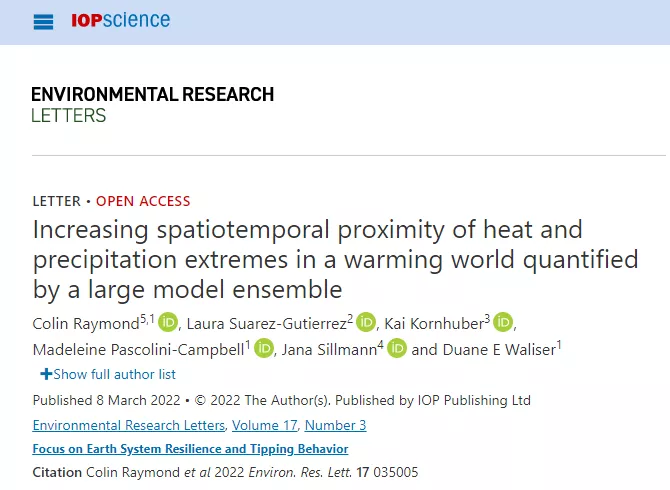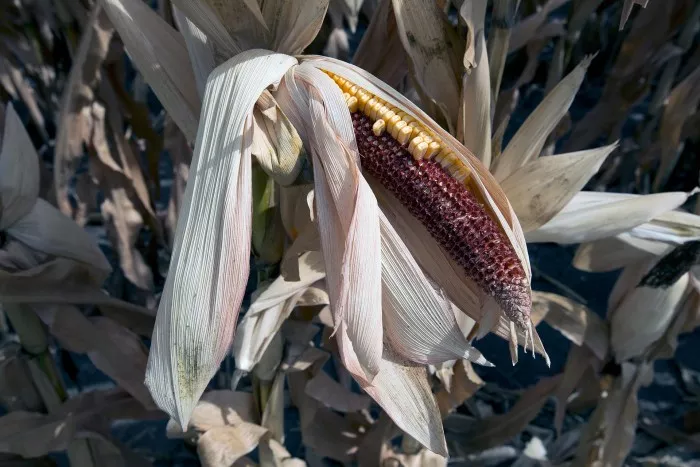According To A NASA Study: A Series Of Extreme Weather Events Such As Floods And Heat Waves Will Gradually Converge In Time And Space, Increasing The Possibility Of Crop Failure, Wildfires And Other Social Risks** In Order To Assess How Climate Warming Will Change The Risks Of Crop Failure And Wildfire, It Is Necessary To Study How These Risk Factors Interact.
Drought In 2012 Led To Corn Crop Failure In Iowa (from: USDA)
As The Earth Warms, Many People Begin To Recall A Proverb - Problems Never Come Singly The New Study, Published In The Journal Environmental Research Letters, Points Out:
Extreme Weather Events Such As Floods And Heat Waves Will Be Closer And Closer In Time And Place, Increasing The Risk Of Crop Failure, Wildfires And Other Social Hazards.
By 2100, The Increase Of Heat Wave, Drought And Excessive Rainfall Will Double The Risk Of Crop Failure Of Climate Related Corn Crops In At Least Three Of The World's Six Major Agricultural Countries.
In The Same Year, It Will Be The First Corn Producing Area In The Midwest Of The United States.
![1.png]()
Figure 1: Time Composite Extreme High Temperature And Its Estimated Change
Many Earlier Studies Have Simulated The Impact Of Individual Climate Change Factors, Such As The Number Of Days When The Temperature In A Specific Area Exceeds 38 ℃ (100 ℉) However, Many Extreme Events Leading To Crop Failure Often Occur Simultaneously Or Continuously
For Example, The Western States Of The United States Have Become Familiar With Wildfires Fuelled By Severe Heat And Drought, And Subsequent Heavy Rainfall Will Create New Risks To Burned Areas - Especially Landslides.
For Many Years, Climate Scientists Have Been Working To Understand And Demonstrate These Complex Chains Of Interacting Events In Numerical Form In Climate Models - But This Is Clearly A Challenging Computational Task.
![2.png]()
Figure 2: Time Composite Extreme Precipitation And Its Estimated Change
Colin Raymond, A Scientist From NASA's Jet Propulsion Laboratory In Southern California, Pointed Out:
Over The Past Five Years Or So, They Have Managed To Develop A Framework To Apply Compound Risk Thinking To Climate Analysis. The System Uses A Set Of Methods That Can Be Calculated Practically Without Getting Into Trouble.
Then The Research Team Used The Famous Grand Ensemble Climate Model Of The German Max Planck Institute And Carried Out 100 Separate Simulations In The Span Of 1991 - 2100.
Previous Relevant Simulations Have Shown That The Model Can Represent The Aggregation Of Extreme Events, Such As The Change Of Extreme High Temperature / Extreme Rainfall, And Is Consistent With The Actual Climate Disasters In This Period.
![3.png]()
Figure 3: Drought And Rain Fluctuations And Their Predicted Changes
Recently, Researchers Have Simulated Climate Models Up To 2100 To Assess Potential Changes In Climate Disasters In The Future - Especially Those That May Occur Simultaneously Or Continuously.
Colin Raymond And His Colleagues Are Particularly Concerned About The Impact Of The Accumulation Of Temperature And Precipitation Hazards On The Corn Harvest. As A Crop All Over The World, The Output Of The Six Main Production Areas Accounts For About 2 / 3 Of The Total.
As The World's Largest Corn Grower, The United States Will Produce About 419 Million Tons (380.3 Million Metric Tons) In 2021.
Results The Simulation Data Show That: By 2100, The Frequency Of Extreme Heat Wave Weather Lasting At Least Three Days Around The World Will Reach 2 ~ 4 Times That Of Today** The Frequency Of Extreme Rainfall For Three Consecutive Days Also Increased By 10 ~ 50%.
![4.png]()
Figure 4: Changes In The Risk Of Corn Failure
In Addition, The Researchers Analyzed The Temporal And Spatial Aggregation Of The Above Extreme Events, And Comprehensively Evaluated How Various Climate Change Factors Will Affect The Future Corn Harvest Under The Guidance Of The Relationship Between Extreme Climate Such As High Temperature And Rainfall And Historical Crop Failure.
The Best Estimate Shows That By 2100, A Series Of Events Will Almost Double The Likelihood Of Corn Failure In At Least Three Granaries (from 29% To 57%).
The Possibility Of Crop Failure In The Five Main Production Areas Also Increased Significantly Within One Year (from 0.6% To 5.4%), And The Midwest Of The United States Is Most Likely To Suffer From Crop Failure A Few Years Ago (followed By Central Europe).

(from: Environmental Research Letters)
Finally, The Study Assessed How Close Extreme Events, Such As Wildfires, Would Increase Human Health Risks The Results Consistently Show That Things Are Interconnected In A Way That We Have Not Yet Fully Understood.
In Addition To Heat Waves And Droughts, We Must Be Highly Vigilant About All These Interlinkages In Order To Prevent Major Disasters From Having A Serious Impact On Mankind.

